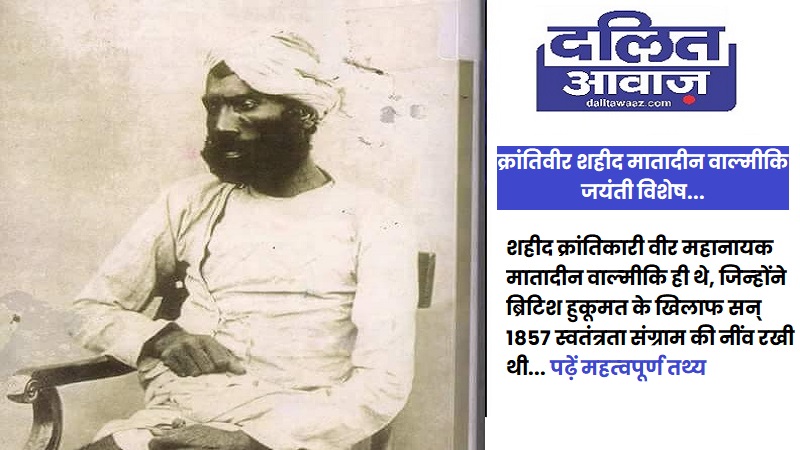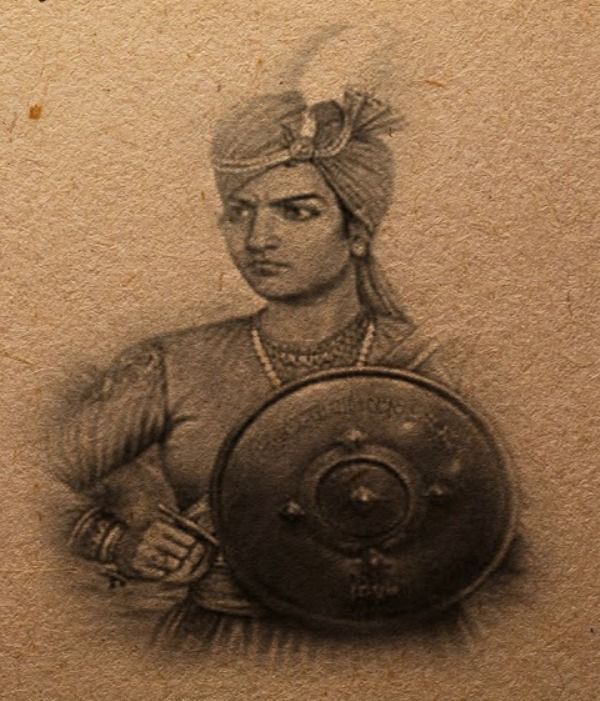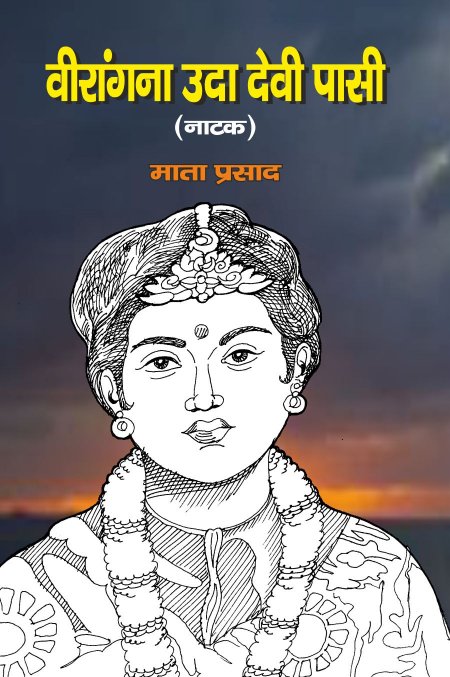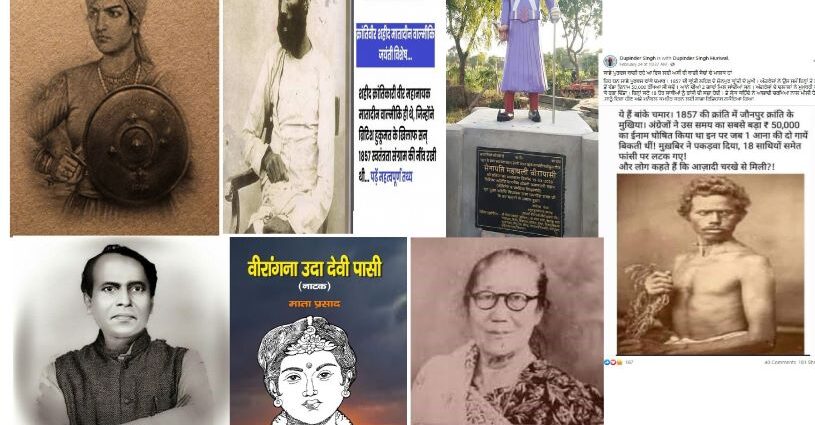A general opinion is that the Dalits could never have any sympathy for the Hindus, who were spearheading the First War of Independence in 1857, and they have always sided with the British. The Bhima Koregaon incident is a prime example of a battle between the forces of the Peshwa and the British, primarily of Dalit soldiers, on January 1, 1818. However, such instances were far and few. Many Dalits contributed handsomely, often sacrificing their lives towards the cause of independence. Nevertheless, many of them remain unsung, but now their images are being reconstructed with the demands of social justice.
This article brings them into the limelight and briefly discusses their lives.
Matadin Valmiki: He was a Dalit freedom fighter who played a crucial part in the events immediately preceding the outbreak of the Indian rebellion of 1857. He was a Valmiki worker in a cartridge manufacturing unit of the British East India Company at Barrackpore who sowed seeds of the 1857 revolt.
He was skinning the dead animals in the job as upper castes considered it the occupation of low castes. One day Mangal Pandey, a soldier in the company’s service, was asked for water by Matadin, but due to him being a Dalit, Pandey refused. Matadin got angry and said while he was proud of his birth in a Brahmin family, then how he could bite the cartridges, made up of the fat of cows and pigs, with his mouth. It awakened both Hindus and Muslims and thus the foundation of the First War of Independence was laid. He was the real trigger for the revolt of 1857. However, he remained unknown while others received their due recognition.

However, even of late, Governments are rising and acknowledging Matadin’s contribution. In 2015, a crossing at Meerut was named Shaheed Matadin Chowk.
Jhalkaribai: She was a Dalit warrior from the Koli caste of Maharashtra. She was the trusted companion of Rani Laxmibai, who played a pivotal role in what is known as the First War of Independence. Despite being poor and illiterate, she was a skilled warrior and excellent horse-riding ability. She also had an uncanny resemblance to Rani. Impressed with her, Jhansi ki Rani inducted her into the women’s wing of the army, where Jhalkaribai was trained to shoot and ignite cannons to fight the battles.

In 1857, General Hugh Rose attacked Jhansi with a large army. The queen faced the army with 14,000 of her troops. She awaited relief from Peshwa Nana Sahib’s army camping at Kalpi but did not come because General Rose had already defeated Tantia Tope. Meanwhile, Dulhaji, in charge of one of the fort’s gates, sided with the British and opened the doors of the Fort of Jhansi. When the British entered the fort, Laxmibai escaped through Bhanderi gate with her son and attendants to Kalpi. Jhalkaribai, taking advantage of her resemblance to Rani, set out for General Rose’s camp in disguise and declared herself the queen. It confused the British, giving ample time to Laxmibai.
Her contribution is only now being acknowledged. The statue of Jhalkari Bai at Guru Tegh Bahadur Complex in Bhopal was unveiled in 2017. In her remembrance, a museum at Panch Mahal inside the Jhansi Fort was set up. The Government has issued a postal stamp depicting her.
Uda Devi Pasi: She was an Indian women freedom fighter who participated in the War of 1857. She was a member of the women’s squad of Wajid Ali Shah, the sixth Nawab of Awadh. She and other female Dalit participants are now remembered as the “Dalit Veeranganas.” She was married to Makka Pasi, a soldier in the army of Hazrat Mahal.

Uda Devi reached out to the queen of that district, Begum Hazrat Mahal, to enlist for the war, who told her to form a women’s battalion under her command.
After her husband died in the battle, Uda Devi took part in the Battle in Sikandar Bagh in November 1857. She climbed up a pipal tree, began shooting at advancing British soldiers, and killed many Britishers. However, later she was killed.
The Pasis of Pilibhit celebrate November 16 to commemorate her anniversary of martyrdom.
Banke Chamar was from Jaunpur in UP. After the failure of the rebellion, Chamar and his 18 associates were declared baghis(rebels). Chamar was ordered to be hanged after being arrested.
Banke Chamar was the great freedom fighter of the 1857 revolution who led the revolution from Jaunpur. After the failure of the war, the British placed the biggest reward of ₹ 50000 on him at that time, when two cows were 6 paise.

But an informer Ramashankar Tiwari, a retired British army Soldier, informed the British about their location. Hence, the British sent the army to capture them, but Banke killed many British soldiers, but at last, the British captured them. He and 18 of their comrades were hanged afterward.
Chetram Jatav and Balluram Mehtar: During the war, both along with other revolutionaries, took to the streets and attacked the British in Etah of UP. Sadashiv Mehre and Chaturbhuj Vaish also played a prominent role in the struggle. However, without any proper planning and coordination, the war failed. They were arrested, hanged from trees, and shot dead. It remains a forgotten chapter of history.
Vira Pasi: He was the security guard of Raja Beni Madhav Singh of Rae Bareli, Uttar Pradesh. Raja was arrested for participating in the war. One night, Vira Pasi entered the prison and helped the king escape. The British then decided to capture Veera Pasi and put a reward of Rs 50,000 on his head. However, they could never catch him.

Putalimaya Devi
She was a Gorkha tribal woman, born in Darjeeling in 1920, and was well-known for fighting for justice. Despite her father’s objections, she enrolled in Congress when its office was established in her village in 1936. Her struggle and activism did not stop there, as she founded the Harijan Samaj, which worked to mobilize Dalits to receive an education. She also founded a women’s organisation that inspired young girls to become patriotic community leaders and to use nationalist sentiments to oppose the colonial regime. During the Quit India movement in 1942, she organized a massive Jan Sabha, which resulted in her arrest by British police.
Putalimaya Devi continued her activism as a Samaj Sevika, even after India’s Independence. The then-Government of India bestowed the titles “Swatantrata Senani” and “Tamra Patra” on her. People called her “Mataji” because she worked as the President of the Kurseong Mahukuma Congress Committee and the Vice-President of the Darjeeling Zilla Committee until her death in 1984.
Helen Lepcha alias Sabitri Devi
Born in 1902, hailing from Sikkim but residing in Darjeeling, she was inspired by Gandhi’s Charkha Movement, which had gained momentum at that time. She once carried out relief measures in Bihar in 1920 after the massive floods that affected the Dalits. Gandhi called her to his Sabarmati Ashram, overwhelmed by her work and renamed her “Sabitri Devi.”

She had a strong rapport with leaders like Sarojini Naidu and Jawaharlal Nehru and worked closely with them for Independence. She also played a significant role in the Non-Cooperation Movement and did the door-to-door campaigns against foreign goods, for which the Britishers later imprisoned her. Being a tribal, she was partial to the tribal needs. She later became the chairperson of various associations in Kurseong like the Sherpa Association and other tribal organizations.
All these fighters aspired for freedom and Independence from oppressive caste structures as well as British rule. Rising above the caste equations, they did a commendable job in the first war of Independence.
Their struggles, as well as their moments of bravery, must be remembered in our talks, books, and media. Only then can India stand up for the rights of its marginalized people.
Disclaimer: This list is not exhaustive.
——-
Written by Amit Agarwal, author of the bestseller on Indian history titled “Swift horses Sharp Swords” and “A Never-Ending Conflict”. You may buy the books at the following link:
https://www.amazon.in/gp/product/B08KH3R4MN
https://www.amazon.in/dp/B0B6J5PKPR
https://www.amazon.in/dp/9355788266 (Hindi)
Twitter handle @amit1119, Instagram/ Facebook – amitagarwalauthor
![]()
- How Hindu rituals spawned numerous advancements in science, maths and other arts - March 13, 2024
- Naga Sadhus and their fighting skills - February 20, 2024
- Lessons for India from the Israel-Palestine conflict - October 12, 2023

